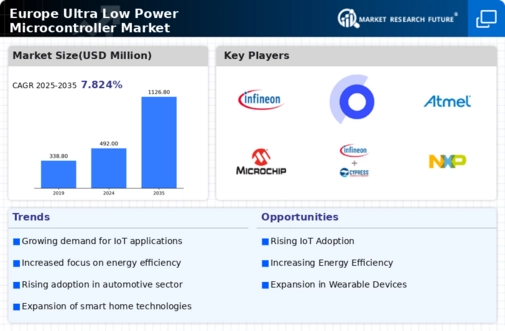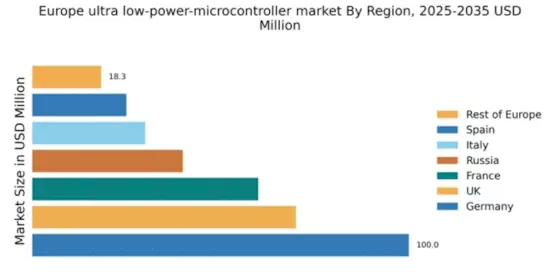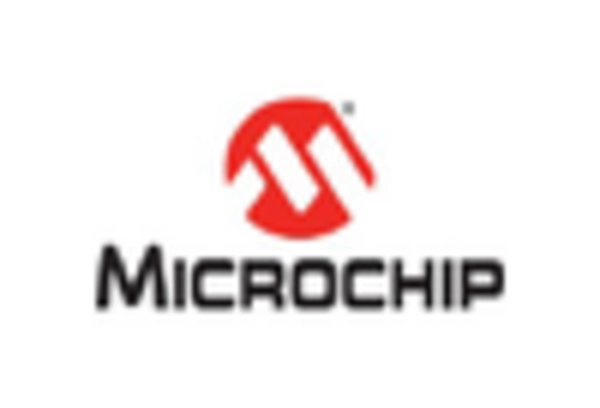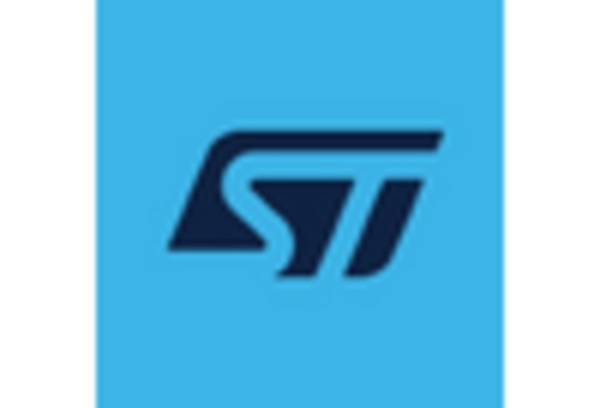Rise of Smart Grid Technologies
The development of smart grid technologies is a significant driver for the ultra low-power-microcontroller market Industry. As Europe invests in modernizing its energy infrastructure, the demand for efficient energy management solutions rises. Ultra low-power microcontrollers are integral to smart grid applications, enabling real-time monitoring and control of energy consumption. The European Commission's commitment to enhancing energy efficiency by 32.5% by 2030 underscores the importance of these technologies. By facilitating better energy distribution and consumption tracking, ultra low-power microcontrollers contribute to the overall efficiency of smart grids. This trend not only supports energy sustainability but also positions the ultra low-power microcontroller market for substantial growth in the coming years.
Growing Adoption of Smart Devices
The increasing integration of ultra low-power microcontrollers in smart devices is a notable driver in the ultra low-power-microcontroller market Industry. As consumers and businesses alike embrace smart technologies, the demand for energy-efficient solutions rises. In Europe, the smart home market is projected to reach €30 billion by 2026, indicating a robust growth trajectory. This trend necessitates the use of ultra low-power microcontrollers, which enable devices to operate efficiently while maintaining functionality. Furthermore, the proliferation of wearables and health monitoring devices, which often rely on these microcontrollers, further fuels this demand. The ability of ultra low-power microcontrollers to extend battery life and reduce energy consumption aligns with the growing consumer preference for sustainable technology, thereby enhancing their market presence.
Increased Focus on Sustainability
Sustainability has emerged as a critical concern across various sectors, influencing the ultra low-power-microcontroller market Industry. European regulations increasingly mandate energy-efficient solutions, compelling manufacturers to adopt ultra low-power microcontrollers in their products. The European Union's Green Deal aims to make Europe climate-neutral by 2050, which could drive investments in energy-efficient technologies. This regulatory environment encourages companies to innovate and integrate ultra low-power microcontrollers to meet sustainability goals. Additionally, the rising awareness among consumers regarding environmental impact further propels the demand for energy-efficient devices. As a result, the ultra low-power microcontroller market is likely to experience growth as companies seek to align their products with sustainability initiatives.
Expansion of Automotive Electronics
The automotive sector's transformation towards electrification and automation significantly impacts the ultra low-power-microcontroller market Industry. With the European automotive market projected to reach €500 billion by 2025, the demand for ultra low-power microcontrollers is expected to surge. These microcontrollers play a vital role in various automotive applications, including advanced driver-assistance systems (ADAS) and electric vehicle (EV) management systems. Their ability to operate efficiently while consuming minimal power is crucial for enhancing vehicle performance and extending battery life. As automakers increasingly prioritize energy efficiency and smart technologies, the integration of ultra low-power microcontrollers becomes essential. This trend not only supports the automotive industry's evolution but also contributes to the overall growth of the ultra low-power microcontroller market.
Advancements in Wireless Communication
The evolution of wireless communication technologies is reshaping the ultra low-power-microcontroller market Industry. With the rollout of 5G networks across Europe, the demand for ultra low-power microcontrollers that can support high-speed connectivity is increasing. These microcontrollers are essential for enabling seamless communication in IoT devices, which are expected to proliferate in various sectors, including healthcare, agriculture, and smart cities. The European telecommunications market is projected to grow to €200 billion by 2025, driven by advancements in wireless technologies. As industries seek to leverage the benefits of 5G, the integration of ultra low-power microcontrollers becomes crucial for ensuring efficient data transmission while minimizing energy consumption. This trend is likely to bolster the market for ultra low-power microcontrollers in the near future.

















Leave a Comment